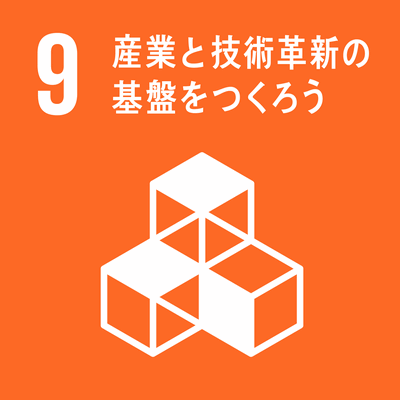シラバス表示
シラバスの詳細な内容を表示します。
→ 閉じる(シラバスの一覧にもどる)
科目の基本情報
| 開講年度 | 2024 年度 | |
|---|---|---|
| 開講区分 | 工学研究科(博士前期課程)電気電子工学専攻 | |
| 領域 | 主領域 : E | |
| 受講対象学生 |
大学院(修士課程・博士前期課程・専門職学位課程) : 2年次 |
|
| 選択・必修 | ||
| 授業科目名 | 量子エレクトロニクスPBL演習 | |
| りょうしえれくとろにくすPBLえんしゅう | ||
| PBL Seminar in Quantum Electronics | ||
| 単位数 | 2 単位 | |
| ナンバリングコード | EN-EMAT-5
|
|
| 開放科目 | 非開放科目 | |
| 開講学期 |
前期 |
|
| 開講時間 |
木曜日 9, 10, 11, 12時限 開講時間は受講者全員と相談して変更することもあります. |
|
| 授業形態 |
対面授業 * 状況により変更される可能性があるので定期的に確認して下さい
「オンライン授業」・・・オンライン会議ツール等を利用して実施する同時双方向型の授業 |
|
| 開講場所 | 工学部電子情報棟(受講者と相談して決定する) | |
| 担当教員 | 永井 滋一(工学研究科電気電子工学専攻) | |
| NAGAI Shigekazu | ||
| SDGsの目標 |
|
|
| 連絡事項 | * 状況により変更される可能性があるので定期的に確認して下さい |
|
学修の目的と方法
| 授業の概要 | 原子分解能をもつ電界イオン顕微鏡およびアトムプローブ分析法による組成分析は,微細化が進む金属・半導体産業に置いて近年需要が増している。当該講義では,本分析法に関連する電界電離現象および組成分析法について取り上げた著書を輪読する。 (Course description) In recent years, the demand for the composition analysis by the field ion microscope having the atomic resolution and the atom probe analysis method has been increasing in the metal and semiconductor industries where the miniaturization is progressing. In this course we will read a book about electric field ionization phenomena and composition analysis methods related to this analytical method. |
|---|---|
| 学修の目的 | 原子分解能で組成分析可能なアトムプローブ電界イオン顕微鏡の基礎理論を習得するとともに,関連する分析装置の取り扱い,ならびにデータ解析法を習得する。 (Learning objective) To acquire the basic theory of the atom probe field ion microscope which can analyze the composition at atomic resolution, and to learn the handling of the related analytical method and the data analysis. |
| 学修の到達目標 | 本講義の到達目標は,物性評価装置の一例としてアトムプローブ電界イオン顕微鏡法の基礎理論を習得し,金属・半導体材料における最先端の課題に関する知見を得る。また,分析装置のハードウェアおよびソフトウェアの概要を把握するとともに,統計的データ処理法を習得する。 (Achievements) The goals of this course is to learn the basic theory of atom probe field ion microscopy as an example of a physical property evaluation device, and grasp the most advanced issues in metal and semiconductor materials. In addition, students will gain an overview of the hardware and software of the analyzer and learn statistical data processing methods. |
| ディプロマ・ポリシー |
|
| 成績評価方法と基準 | 出席および授業での発表と学習姿勢を評価基準とする. (Grading policies and criteria) Attendance and presentation in class and learning attitude are used as evaluation criteria. |
| 授業の方法 | 演習 |
| 授業の特徴 |
教員と学生、学生相互のやり取りの一部が英語で進められる授業 教員と学生のやり取りは日本語でも、英語による論文や教材の講読を含んだ授業 |
| 授業アンケート結果を受けての改善点 | |
| 教科書 | K. M. Bowkett and D. A. Smith "Field-ion microscopy" |
| 参考書 | T. T. Tsong, "Atom Probe Field Ion MIcroscopy" |
| オフィスアワー | 適宜 (Office hour) As appropriate |
| 受講要件 | 該当無し (Prerequisites) None |
| 予め履修が望ましい科目 | 該当無し (Courses encouraged to take in advance) None |
| 発展科目 | |
| その他 |
英語対応授業である。 ●遅刻,無断欠席をしないように. ●他の受講者に迷惑をかけますので,担当する部分は必ず期限までに実施のこと. ●Don't be late or leave without permission. ● Be sure to prepare the part in charge by the deadline, as it will inconvenience other students. (This course is English-supported.) |
授業計画
| MoodleのコースURL |
|---|
| キーワード | 表面物理,電界イオン顕微鏡法,アトムプローブ質量分析法 |
|---|---|
| Key Word(s) | Surface physics, field ion microscopy,Atom-probe mass spectrometry |
| 学修内容 | 第1回 Principle of Field Ion Microscpy 第2回 Principle of image formation 第3回 Field evaporation 第4回 Field ionization 第5回 Analysis of field ion micrograph 第6回 Some geometrical relationships 第7回 Practical aspects of field ion micrscopy 第8回 The microscopic chamber, specimen holder anc screen 第9回 Image intensity 第10回 Experimental technique 第11回 Some common artifact 第12回 Point defect 第13回 Line defects 第14回 Dislocation observations 第15回 Interface |
| 事前・事後学修の内容 | 演習は輪講形式で行うので,テキスト内容についてよく調べ,他の参加者が理解できるように発表準備をする。 (Contents for pre and post studies) Exercises are conducted in a round-table format, so examine the text contents carefully and prepare for the presentation so that other participants can understand them. |
| 事前学修の時間: 事後学修の時間: |
